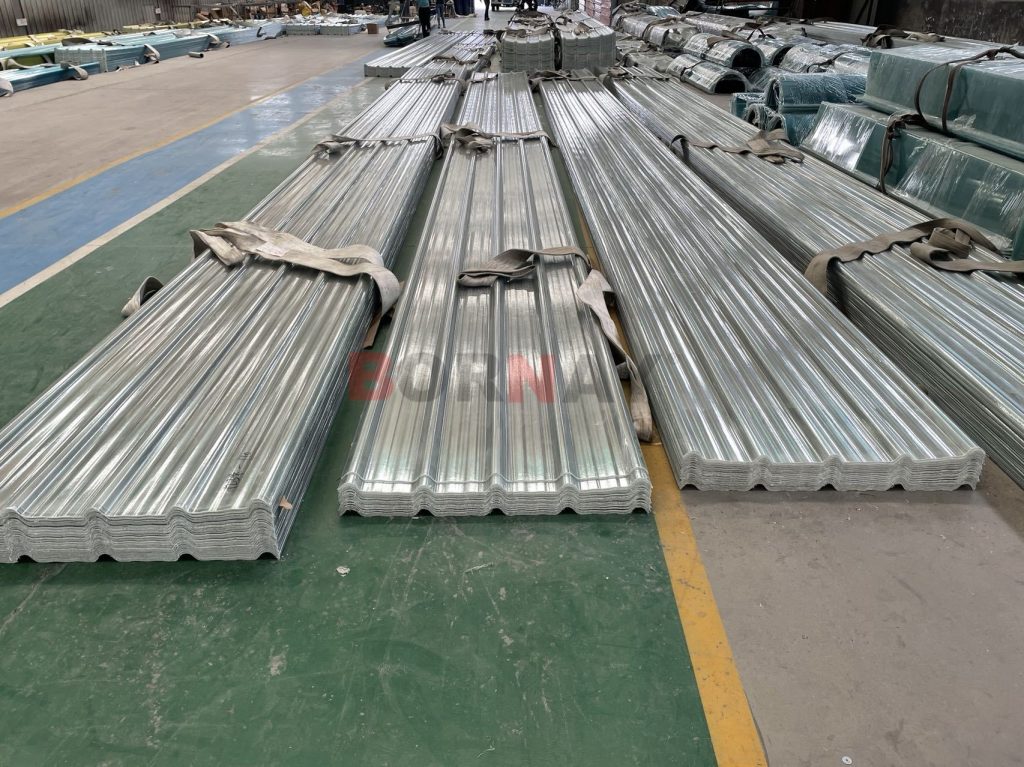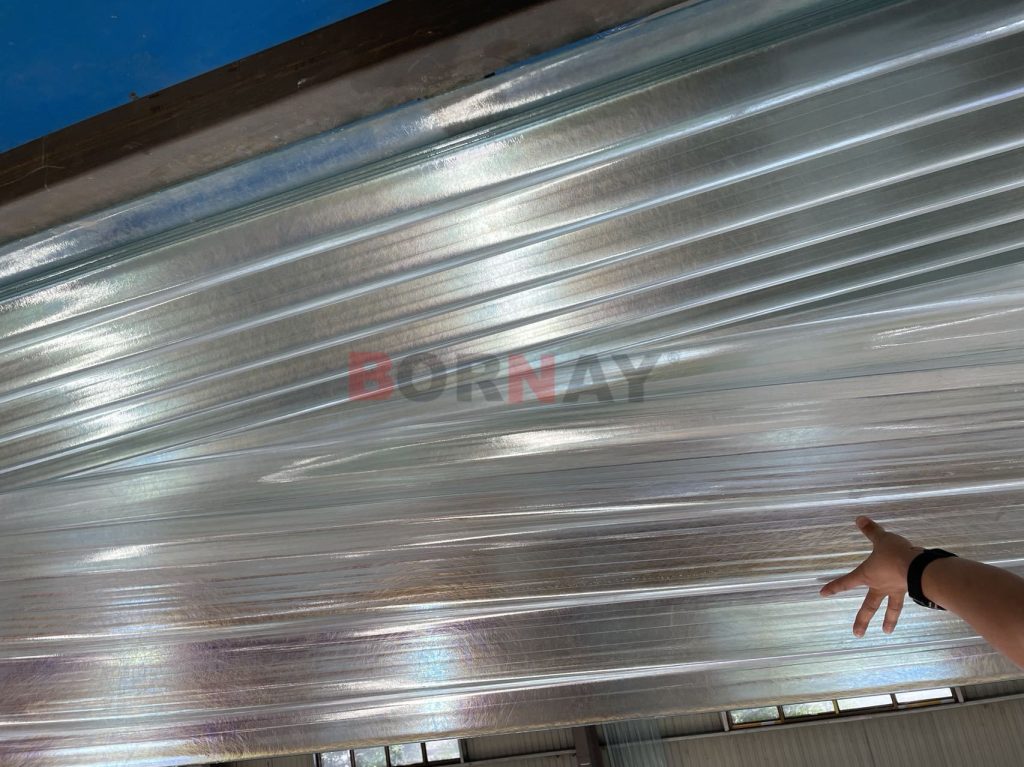bonai@tilefrp.com
Deciphering FRP roof panels: advantages, characteristics and scope of application
FRP (Fiber Reinforced Plastic) roof panels are a type of roofing material that combines the strength and durability of plastic with the reinforcing properties of fibers. These panels are commonly used in various applications where a lightweight, weather-resistant, and long-lasting roofing solution is required. Here are some advantages, characteristics, and scope of application for FRP roof panels:

Advantages of FRP Roof Panels:Lightweight: FRP roof panels are lightweight compared to traditional roofing materials like metal or concrete, making them easier to handle and install.
High Strength: The fibers embedded in the plastic matrix provide excellent strength and rigidity to FRP panels, allowing them to withstand heavy loads and resist impact.
Weather Resistance: FRP panels are highly resistant to weathering, including UV radiation, moisture, and temperature variations. They can retain their structural integrity and appearance even in harsh environmental conditions.Corrosion Resistance: Unlike metal roofing materials, FRP panels are not susceptible to rust or corrosion, making them ideal for installations in coastal areas or industrial environments where corrosion is a concern.Design Flexibility: FRP roof panels can be manufactured in various shapes, sizes, and colors, allowing for versatile design options to meet specific architectural requirements.Longevity: FRP panels have a long lifespan and require minimal maintenance. They are resistant to rot, decay, and insect damage, which extends their service life.Energy Efficiency: FRP panels can provide good insulation properties, reducing heat transfer and improving energy efficiency in buildings.

Characteristics of FRP Roof Panels:Material Composition: FRP roof panels are typically composed of a thermosetting plastic matrix, such as polyester or vinyl ester, reinforced with fibers such as fiberglass, carbon, or aramid.Light Transmission: FRP panels can be designed to allow varying levels of light transmission, ranging from translucent to opaque, enabling natural lighting in structures.Fire Resistance: FRP panels can be manufactured with fire-retardant additives, improving their resistance to fire spread and complying with safety regulations.
Installation: FRP roof panels are often installed using mechanical fasteners or adhesives, depending on the specific application and design requirements.

Scope of Application:FRP roof panels find applications in various industries and structures, including:
Commercial and Industrial Buildings: FRP panels are commonly used in warehouses, factories, agricultural buildings, and commercial facilities where a lightweight, durable roofing solution is needed.Residential Construction: FRP panels can be employed for roofing in residential buildings, particularly in areas prone to extreme weather conditions.Greenhouses and Agricultural Structures: The light transmission properties of FRP panels make them suitable for greenhouses, providing diffused natural light to plants.Sports Facilities: FRP panels are used in the construction of stadiums, indoor sports complexes, and swimming pool enclosures.Transportation: FRP roof panels can be found in the construction of transportation infrastructure, including railway stations, bus terminals, and airports.Signage and Skylights: FRP panels are also utilized in signage boards, canopies, and skylights, thanks to their versatility and light transmission capabilities.

It's important to note that specific product specifications and application guidelines may vary among manufacturers, so it's recommended to consult with suppliers and industry professionals to ensure the suitability of FRP roof panels for a particular project.


